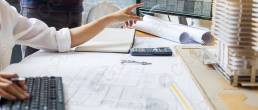- For the design of a roasting and grinding plant it is necessary the type of coffee which is intended the process to design. The equipment allows to process both pure or natural coffee, as roasted coffee adding sugar, gourmet coffees, coffees for HORECA or retail, for soluble coffee or coffee for capsule. To do this, plant processes and designs can be different with different configurations and need different care to take into account in the design of the plant. In the case of cocoa, cereals and beans, the equipment and its operation are adapted to what will be the subsequent process, either pressing, grinding, or the direct packaging of the product.
- The types of packaging that must be used in the plant condition the design of the process line: from packaging in capsules, vacuum packaging, in cans, in flexible packaging bags (horizontal and vertical), in bulk, the packaging of ground coffee, roasted coffee beans, or cocoa and roasted beans require different configurations to take into account, both in the packaging capacity required and in the care of the product so that it preserves all its qualities before the packaging process.
- The process lines are configured and designed in a personalized way, even to obtain the same product, depending on whether a simple and flexible configuration is needed, or more sophisticated and demanding. To do this, the needs of the project and the installation area of the equipment are evaluated, so that the process line has the maximum performance.
- Especially with coffee, roasting and grinding has not always been processed in the same way over the years at different times and in different generations. The roasting and grinding processes have been evolving, since consumption habits are also different. Both roasters and mills have been and are being adapted so that they can meet these new demands that the market demands and are in continuous development for the next needs and new forms of consumption.
- The facilities can be designed complete, from receiving the grain to be processed to the packaging; or partial, because they must be part of an extension of an existing line. The engineering study allows adapting this new equipment to existing facilities, being or not manufactured by us, in order to harmonize the production process of existing equipment and that there are no incompatibilities.
- The design of the plant must also consider the availability of space from where the equipment has to be installed, both in surface and height, as well as the geographical location, and the maximum use of the available space. The study of the project is always personalized, minimizing the use of space required for the installation of the equipment, and that this location allows in the future to make extensions, with similar or greater capacities, with equipment that processes the same type of product, or different products.
- All the plants are designed to, in the future, be modernized, or be expandable, either through parallel lines or capacity expansions of the different elements that compose it. Modernization not only affects the manufacturing process of the product, but also the adaptation of new legislation and regulations of mandatory application.
- The design of the plants is based on the complete knowledge of the final product that has to be elaborated. To do this, periodic visits are made to the customer in their process plant and a detailed study is made of what is the product to be elaborated, what is the current process and what are the improvements that must be implemented, so that with a more modern technology the same product can be repeated, or even evolve it if required.
- The development of the project is done together with the Engineering, Maintenance and Production teams of the Client. The projects are reviewed and customized in every detail, thanks to the participation of the Client in the definition of the needs, allowing our engineering team to develop the solution that best meets their needs.
- Environmental regulations are continuously updated, becoming increasingly broad and demanding, thanks to the increasingly pronounced environmental awareness. The projects observe maximum energy savings, minimize emissions as much as possible, contemplate the recycling of water, and the use of renewable and clean energies. All projects use the technical solutions that allow the most demanding environmental goals, and that are adaptable for future needs.
- The process plants and the equipment that compose it not only elaborate and produce satisfactorily the desired final product, but they achieve it by adapting to the Client's work methodology. The work habits and methodologies of the operators are taken into account, and the available resources, in order to facilitate the use of the equipment, and that they have the maximum performance.
- Increasing energy efficiency is mandatory in the designs of new projects. For this, heat recovery systems are incorporated, installation of low energy consumption motors, use of renewable energy sources, or rationalization in the use of equipment, which remain at rest when their operation is not necessary. The designs and manufactures of the equipment avoid the use of materials with unnecessary energy consumption.
- The teams are obliged to take care of the food safety of the product they process, as well as the safety of the operators who operate the equipment, in order to comply with the required regulations, and respect the most demanding quality and safety standards.
